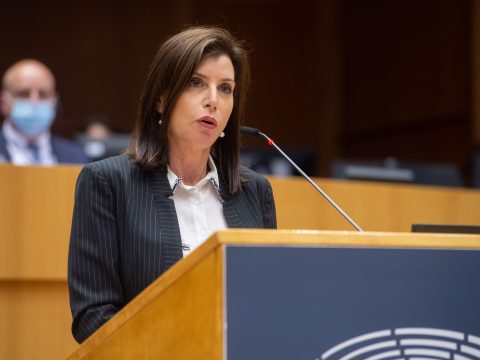01/02/2023
Op-ed in EURACTIV: “Europe must watch Beijing, not just Washington in its response to US inflation act”
In October 1954, in the small city of Fushun, around 800km east of Beijing, China launched its first aluminium smelter. That year would see China register a modest 19 tons of primary aluminium production.
From such humble beginnings, China became the world’s largest aluminium producer in 2001, and in 2013, it produced more than the rest of the world combined. Last year it was responsible for nearly 60% of global production.
But, this meteoric rise has been accompanied by an equally notable demise in fortunes for other parts of the world. For the US, this has seen it knocked from the top spot to now being a bit player. Last year it registered just 2% of global output.
In Europe, we have seen a similar decline, with nearly a third of aluminium production lost since 2008. Rocketing energy prices in 2022 struck another blow, with half of the remaining European production capacity now offline.
But how did China move from Fushun to world domination of the aluminium industry? We all know the answer. A dogged industrial strategy, huge state subsidies, and, historically, a complete disregard for environmental concerns.
These facts were laid bare by a 2019 OECD investigation of the top 17 Aluminium producing companies. It found that between 2013 and 2017, 85% of all global state subsidies for aluminium had gone to just five individual companies – all Chinese.
You can chart a similar story across many industries over the past few decades, and recent years have seen grumblings and complaints about these unfair advantages enjoyed by Chinese businesses translate into a concrete political movement in the United States.
The idealism and optimism that saw China join the WTO in 2001 has passed. Policy in Washington is now driven by realpolitik, its relationship with China firmly cemented in the mould of seeing it as systemic and economic rival.
The passing of the Chips Act and the Inflation Reduction Act in 2022 is a definitive sign of this and is likely to be seen as a major turning point when the history books are written.
Whether it’s the defence implications of having the leading edge when it comes to semiconductors or the role that e-batteries play in underpinning the foundations of the car industry, the US is now adamant that these industries of the future cannot go the same way as aluminium.
This turning point poses huge questions for the EU. We have understood the issues for a long time, but we have sought to tackle them without abandoning our beliefs in an open global trading system and free market economics.
With the US and China embracing a high subsidy model for strategic industries, the days of this being a choice for the EU are over. Investments in the EU have already been put on hold, and we already hear stories of the US actively seeking to attract would-be European investment across the pond.
Next month will see the Commission will unveil its long-awaited Critical Raw Materials Act and the recently announced Net Zero Industrial Act. Alongside efforts to loosen state aid and competition laws, these initiatives offer an opportunity to level the playing field.
A willingness to offer up serious money will ultimately be the test of whether these initiatives succeed or fail. European Commission President Ursula Von der Leyen has already committed to a Sovereignty Fund. Industry has welcomed this and come forward with other suggestions, such as an EIB Industry Bank.
There are also suggestions to open up Recovery and Resilience Funding to industry. Last year, Estonia funded a permanent rare earth processing unit using its Just Transition Fund, a project that would otherwise have failed to go ahead. This should stand as an example of what can be achieved.
Such a radical shift in policy is particularly difficult for those of us who believe in the power of the free market. But we live in changing times, and we must break free from some of our ideological political strait jackets if we are to succeed in the new global race.
It’s also time that we reassess whether it is, in fact, possible to see China simultaneously as a partner, a competitor, and a rival. Linguistic gymnastics such as this comes easy to those in the Brussels bubble, but for those fighting to survive in the real world, this approach clearly needs to be revisited.













